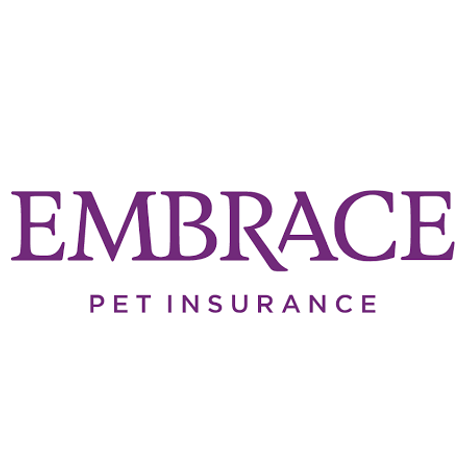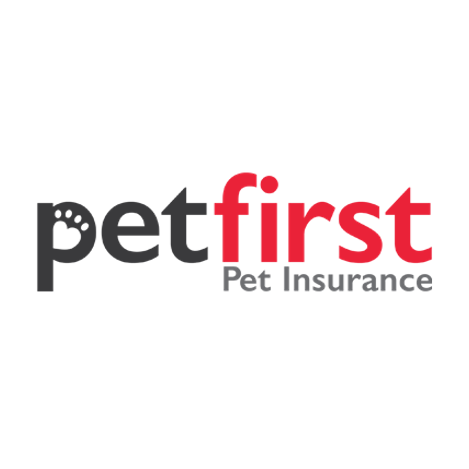Is Pet Insurance Worth It? - A Pet Insurance Buyer's Guide
Advertising Disclosure- Our content is free because we earn a commission when you click or make a purchase using our site.
Most pet owners will tell you that their four-legged, feathered, and furry friends are more than pets; they’re family. For many families though, the costs of proper pet care, from routine check-ups and preventative care through emergency medical procedures can present a staggering financial challenge. Consider these points reported by CNBC:
For pet owners, these can be some scary stats. Fortunately, pet insurance can help alleviate those difficulties. Just as you value health insurance for your two-legged family members, health insurance for pets can provide the same security and peace of mind.
Now, more than ever, pet parents have options when it comes to the types of health coverage they choose for their pets. Over the last couple of decades, the pet insurance industry has grown by leaps and bounds. Currently, an estimated 2.16 million pets in the United States have their own insurance coverage.
Buying pet insurance can be a tricky process, however. There's a lot to understand, some confusing terminology, and an abundance of options to sift through. Here's a thorough pet insurance buyer’s guide, along with some helpful tips, to help guide you as a pet parent through the process of comparing and choosing a pet insurance plan for your fur baby.
What Is Pet Insurance and How Does It Work?
Pet insurance will help you pay for the costs of certain types of treatment provided by a recognized care provider, such as a veterinarian, animal clinic, or other professional. Initially, you will enroll your pet with a certain company after you have picked a plan. The company may request some things from you such as:
Copies of registration papers if you have them
Prior veterinarian records for the care your pet has received until that point if available
Information about your pet's age, breed, current health status, and family history if known
Some pet insurance companies will require you to have your pet seen by a vet before enrollment or to have had a wellness visit within the prior year.
When your pet has to go to the vet, you will pay the charges as you normally do. However, once you have paid, you can submit a request for reimbursement to the pet insurance company. The request will be reviewed to make sure your plan covers the treatment, and the percentage of reimbursement will be sent to you in the mail.
Some more modern pet insurance providers, such as Trupanion and PetsBest, will also pay the vet directly instead of requiring you to file a claim and be reimbursed for your payments. However, in order for direct payments to work, the vet has to work with the insurer because they will be the one submitting the claim forms for payment instead of you.
Pet Insurance Buyers Guide Tip: If you prefer direct vet pay pet insurance over claims reimbursement, check with your usual veterinarian to see if they are currently affiliated with a certain insurance company.
Why Having Pet Insurance Is Important
Taking good care of your pet means tending to its medical needs just as you would any other member of the family. Unfortunately, pets do not have access to the same type of medical insurance as humans, which means those vet bills can be a difficult financial pill to swallow if you do not have any help. Pet insurance is important because it can help you pay for unexpected treatments and help ensure your pet does not miss out on necessary vet care because you do not have room in your budget to cover all the costs.
A few other advantages of pet insurance include:
It enables you to pay for more advanced medical care so your pet gets the best treatments
It prevents having to seek euthanasia for a pet because you cannot afford proper care
It ensures your pet can continue to get care in spite of your personal financial struggles
It can help make sure you get to enjoy your pet for as many years as possible
What Is Covered By Pet Insurance
You'll notice when you start shopping for pet insurance that there are multiple types of plans available, and each provider can have a different collection of plans available that covers different types of care. The different levels of pet insurance you can pick from usually include:
Accidents Only Coverage - An accidents only plan is the most basic coverage. These plans will cover things like accidental lacerations and injuries, injuries related to swallowing an object or something bad, or injuries sustained when your pet is hit by a car.
Routine Wellness Coverage - Wellness visits, dental checkups, vaccinations are all examples of routine wellness care. This type of coverage may not be a built-in part of most plans, but the coverage may be available as an additional coverage option with some companies.
Illness Coverage - Illness coverage will reimburse some of the costs you pay when you have to seek treatment because your pet has an illness. Illness can be defined as a sickness or disease that affects an otherwise healthy pet.
Congenital/Hereditary Condition Coverage - Most plans will not cover these conditions unless you pay for some type of additional coverage. Congenital and hereditary conditions are conditions that may have been present at birth or those that are common to develop in certain breeds. A few examples would be something like a cherry eye or a congenital heart defect.
Pet Insurance Buyers Guide Tip: It can be well worth paying for the routine wellness coverage temporarily from some companies. Some companies include spaying and neutering, flea prevention, and heart worm prevention with this coverage option.
Additional Benefits Options That May Be Offered
Alternative therapy coverage for treatments like acupuncture, massage therapy, or holistic treatments
Behavioral issue coverage for costs associated with the diagnosis and treatment of conditions like canine anxiety or excessive chewing problems
Prescription drug coverage to reimburse some of the costs of medications for your pet
Continued treatment coverage for costs related to ongoing treatment for the same condition
It is important to note that some companies, such as ASPCA Pet Health Insurance, will only offer one complete plan that covers multiple treatment types in one plan. These comprehensive plans can be more costly, but they ensure everything from accidents and illnesses to hereditary conditions and behavioral issues are covered.
Terms to Understand About Pet Insurance
If you have not spent a lot of time shopping for insurance in general, you can come across a few terms that you do not understand about pet insurance. The more educated you are about terminology while you shop or talk to a pet insurance agent, the more equipped you will be to make good decisions.
Reimbursement Percentage Level
Instead of paying benefits to the veterinarian, pet insurance companies reimburse you for treatment costs after the charges are accrued. When you initially invest in a policy, you will choose a reimbursement level. For example, a company may offer 60, 70, or even 90 percent reimbursement levels. Basically, this means when you are billed for a certain treatment covered by your insurance, you will be reimbursed according to the reimbursement percentage level you have.
Pet Insurance Buyers Guide Tip: Look carefully at how the reimbursement plan with any given company works. Some pet insurance companies do not use the actual veterinarian bills; they use a list of costs considered usual and customary to reimburse you, which may be substantially lower than the amount billed.
Waiting Period
All pet insurance plans will come with some waiting period. The waiting period is how long you will have to wait after purchasing coverage to actually have coverage. For the most part, unexpected injuries and accidents will be covered rather quickly; usually within a few days. Coverage for pet illnesses may have a longer waiting period. For example, if your pet gets sick a few days after signing policy documents, you may not have coverage for the vet bills because there is a two-week waiting period or more.
Annual Benefit Limits or Payout Limits
Benefit limits or payout limits tend to come along with pet insurance plans, and some plans can have several plan limits in place. Many have an annual benefit limit, which is how much the plan will pay out before your coverage is capped and the plan will no longer pay. Some plans have payout limits for the lifetime of the pet as well. In the case where both limits exist, the plan will only cover a certain amount per year until you reach the maximum payout for the lifetime of the pet. Payout limits may also be included for certain ailments, incidents, or medical conditions. For instance, a plan may have a $1,000 payout limit for surgical procedures.
Exclusions
Exclusions are conditions that will not be covered by the pet insurance plan regardless of whether it is a pre-existing condition or something new. A few examples would be a plan that excludes dental treatment coverage or hip dysplasia treatment coverage. Most plans do exclude pre-existing conditions, which means any condition that existed when you purchased the plan will not be covered from that point.
HoW to Make Sure You Get the Best Pet Insurance For YOU
If you do make the decision to invest in insurance for your pet, there are certain steps you should take to make sure what you end up with is the best plan for you and your pet.
1. Consider the cost of care you currently pay or anticipate paying for your pet. - Look at how much you currently pay for healthcare for your pet, and how much care costs could be in the future. Using these figures, compare general pricing for different types of coverage to determine what you actually need. Take into consideration how much your monthly premiums should be to fit with your current budget.
2. Do your research on every provider. - Every provider is going to have a different track record. It never hurts to check out Google Reviews or reviews and ratings published by the Better Business Bureau to see what other customers have to say about their personal service experiences. Additionally, you should read through all the details given on an insurance provider's website carefully, looking for things like waiting periods, exclusions, payout maximums or maximum benefits, and other pertinent information.
3. Get price quotes from multiple places. - Never settle with just one price quote from one provider. The costs can vary drastically from one provider to the next for differing types of coverage. It usually only takes a few minutes to provide an insurer with a few details to get a basic estimate of what your premiums will be.
A Few Words About Pet Insurance Pricing
Pet insurance could be deemed as a fairly affordable investment. In 2014, the average cost of pet insurance in both Canada and the U.S. was just $413 per year. Accident-only plans are even cheaper at around $154 annually. Prices you pay for pet insurance can vary depending on several factors, including:
Your location: Veterinary care costs vary depending on location, so your pet insurance cost will vary as well
Your pet's breed: Some breeds have more health concerns and risks than others
The age of your pet: Older animals tend to require more veterinary care
Of course, the type of insurance coverage you choose, as well as deductibles and reimbursement levels, will affect pet insurance pricing as well. And, prices can differ from one pet insurance company to the next.
Pet Insurance Buyers Guide Tip: Some insurers will give you a discount if you insure multiple pets. For example, PetsBest Pet Health Insurance offers a 5% discount for additional pets covered and ASPCA Pet Insurance offers a 10% discount for additional pet coverage.
Common Questions From Pet Owners About Pet Insurance
Can you take your pet to any veterinarian you prefer?
Naturally, the answer to this can vary depending on the provider, but the majority of the top providers allow you to seek care at any veterinarian, clinic, or animal hospital you choose. Some pet insurance providers will offer coverage for certain veterinary specialists as well, such as animal allergists or behavioral specialists.
What is the claim-filing process like for reimbursement?
The claim-filing process can vary depending on the provider, but most providers do aim to make the process as simple and straightforward as possible. The majority of companies allow you to submit claim forms online and necessary receipts or bills via their website, and some providers have a downloadable mobile app you can use to submit claims from your phone.
How long does it take to get reimbursed after filing a claim?
The duration it takes to receive your reimbursement after filing a claim should be discussed with the provider. Every company follows a different claims process and will have different time frames to offer. As an example, Trupanion (one of the leading pet insurance providers) claims they process 60 percent of claims within 24 hours.
Can you get pet insurance for an older pet?
Some insurance providers do not accept the enrollment of pets who are over a certain age. Many do not enroll pets who are between 10 and 14 years old. However, some companies will only have age restrictions for certain types of coverage. For example, you may be able to get wellness coverage only for a senior dog, but you may not be able to enroll the dog in illness coverage.
Final Thoughts On Buying Pet Insurance for the First Time
Overall, pet insurance can be a responsible financial decision and a responsible decision to protect your pet's health. It is a good idea to talk to your current vet for recommendations, but in the end, the coverage you choose should be a decision based on what your pet needs and what you can afford. Always read disclaimers and fine print with any plan or policy offered, and don't be shy about asking questions when you are in the process of buying a plan from any provider.
Our Editorial Process
We offer free content and reviews, because we want to help you make the right choices for your needs. To aid in your decision-making process, we provide:
Impartial perspectives
Comparative market analysis
Aggregated research
Comprehensive viewpoints
We hope you find the information we present both incisive and valuable. For more information on our editorial process Click Here.









